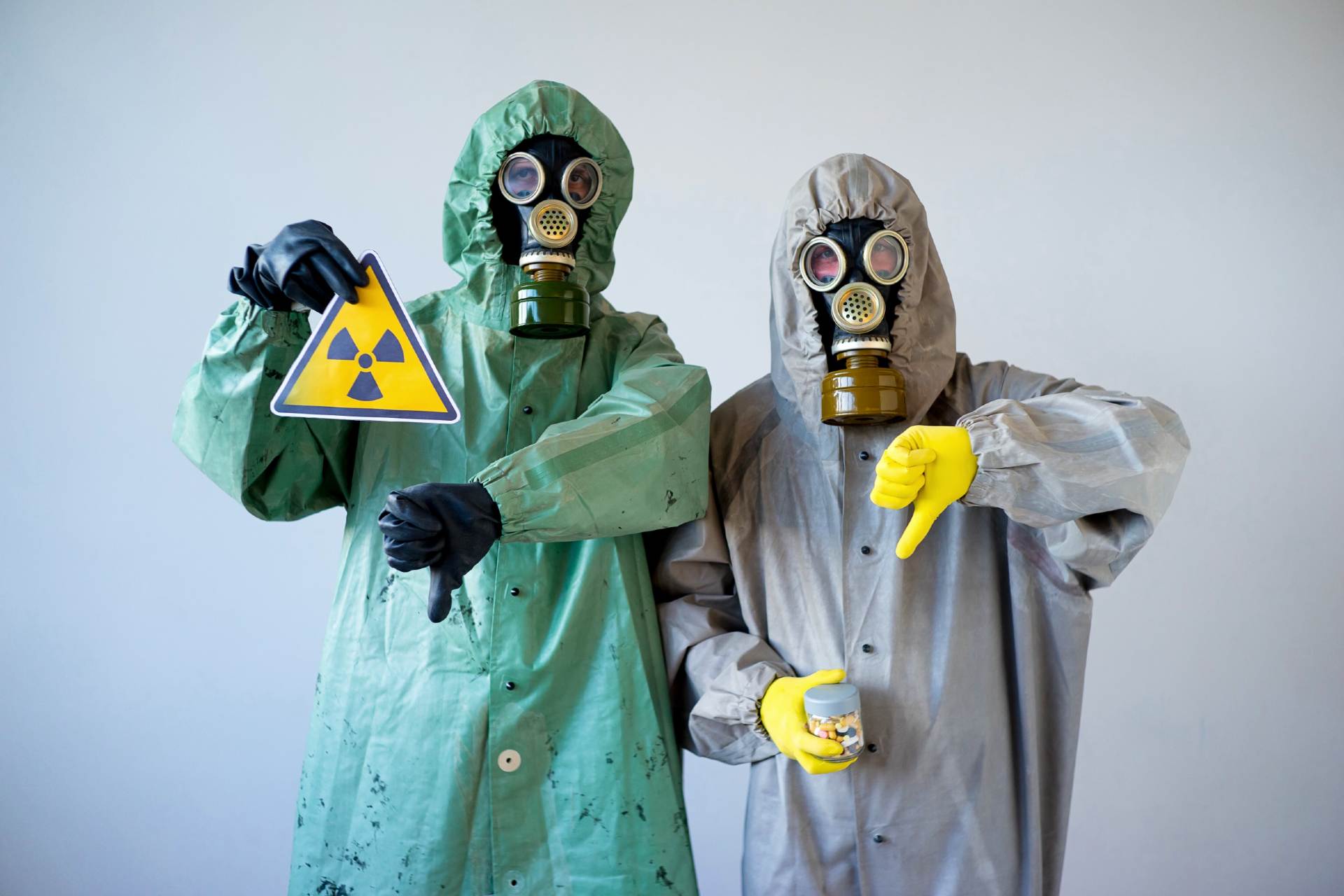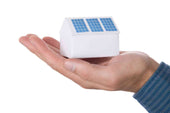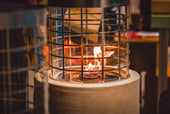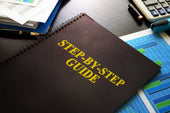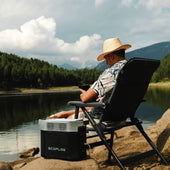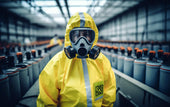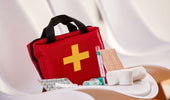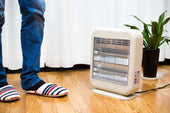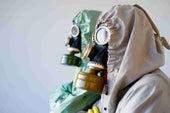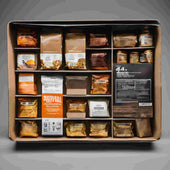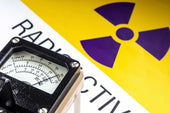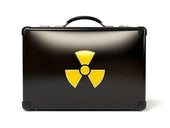More people are considering how to protect themselves and their families in today's uncertain world.
A protective suit is essential for safeguarding against dangers like illnesses and infections, viruses like COVID-19, harmful compounds, and even Chemical, Biological, Radiological, and Nuclear (CBRN) catastrophes.
In a world where terrorism is rising, chemical, biological, radiological, and nuclear (CBRN) risks are constantly evolving.
The availability of the proper suit can be the difference between life and death.
What are HAZMAT Suits?

HAZMAT suits get their name from hazardous materials. Operating in a setting with hazardous materials requires a hazardous materials suit. Decontamination suits are another term that some use to represent the same idea.
These are essentially types of personal protection equipment (PPE) that you wear to safeguard oneself from hazardous substances, such as:
-
Chemicals
-
Nuclear waste
-
Human bodily fluids
-
Harmful gases
-
Pests, such as bedbugs
However, you must exercise caution when people must clearly define the precise details and structure of the garment.
The concept is the same regardless of the name given to a radiation suit or the material it is composed of.
Workers laboring in hazardous environments, where risks to their bodies, particularly their skin and respiratory system, might be toxic or even fatal, wear HAZMAT suits as personal protection equipment.
Particular suits are better than others. But it's also true that less expensive protective suits are occasionally better suited to particular occupations because there are many situations where you can need a protective suit.
What Are Hazmat Suits Made From
Hazardous material suits frequently contain a few different materials. This is because some components are more resistant to particular exposures than others.
The suit's structure is determined by the need to minimize specific dangers.
For instance, an ordinary Tyvek or PVC suit provides enough defense against the splashing of potentially dangerous substances.
However, a rubber suit might be required if you work with strong acids or other chemicals that could damage a lower-grade suit.
You can find HAZMAT suits made from a variety of materials, including:
-
Tyvek
-
PVC
-
Rubber
-
Teflon
-
Rip-stop fabric
-
Insulators
NBC Suits
Military PPE includes NBC (nuclear, biological, chemical) suits, commonly known as chemsuits, chem suits, or chemical suits.
NBC suits are designed to guard against direct contact with and contamination with radioactive, biological, or chemical substances. They also shield against all sorts of radiation and radioactive material pollution. NBC suits are typically worn for extended periods so the wearer can fight (or otherwise operate) when a nuclear, biological, or chemical attack is imminent or has already occurred.
The hazmat suit serves as its civilian equivalent.
With the introduction of the new threat posed by biological agents and radiological weapons, the acronym NBC has been replaced by CBRN (chemical, biological, radiological, and nuclear).
CBRN Suits
A Chemical, Biological, Radioactive, and Nuclear (CBRN) suit is a type of personal protective equipment (PPE) that serves as an impermeable layer to shield the wearer from:
-
chemical compounds
-
biological substances
-
radioactive substances
-
nuclear weapons
Similar to the bunker gear that firefighters frequently wear, several of these suits also have ratings for protecting the wearer from heat and extreme temperatures. However, such equipment is quite expensive, bulky, and heavy.
Hazmat Suit VS Radiation Suit
A hazardous materials suit doesn't necessarily offer radiation protection. There are two different types of radiation, both quite dangerous. However, one is so harmful that not even a bulky suit will protect you.
Ionizing radiation, often known as x-rays and gamma radiation, is the first kind. No suits on earth are strong enough to withstand the impact of that kind of exposure to ionizing radiation, which is exceedingly harmful.
You would need something equivalent to a lead shield constructed within a thick concrete shelter to give enough protection in a circumstance that results in ionizing radiation exposure.
Particle radiation, or fallout as it is more often known, is the second kind of radiation. In all honesty, you're too close to ground zero to survive if you're near a nuclear explosion close enough to be exposed to ionizing radiation.
However, wearing a well-made radiation suit can endure particle radiation exposure without getting sick.
The best news is that hazmat and particle radiation suits are identical, regardless of your chosen label. Both provide the wearer with an impermeable coating that protects them from outside hazards.
Classifications

Hazmat suits fall into one of three categories.
When determining which classification is ideal for your application, consider your potential position in a post-disaster scenario and the threat level you want to be ready for.
It's important to understand that the more full protective clothing a suit is, the heavier and more uncomfortable it is.
This is because the most protective garments are frequently bulkier, stiffer, challenging to maneuver, and uncomfortable. A suit with an integrated hydration system makes getting water while wearing it easier. Suits also make the user sweat a lot, making hydration very important.
The federal government has established guidelines for hazmat suits to assist you in determining which suit you need and to standardize their use against varied dangers.
Two separate charts classify CBRN suits. The National Fire Protection Act of 1994 established Class 1, Class 2, and Class 3 CBRN suits, which align with the Occupational Safety and Health Administration's (OSHA) Level A, B, and C designations.
The two classifications are intended to group suits according to how well they can each protect against specific risks. This graph does an excellent job of comparing the effectiveness of the various classification schemes. They are comparable.
Level A suits offer the highest level of danger protection, and the lowest is Level C. Here is a detailed breakdown of each level.
Level A Hazmat Suit
A Level A suit completely encloses the wearer. They must also completely enclose their Self-Contained Breathing Apparatus (SCBA) inside the suit.
Limited hazmat suits are necessary if liquid and airborne concentrations exceed the limit of being Immediately Dangerous to Life or Health (IDLH).
According to the National Institute of Occupational Safety and Health (NIOSH), an IDLH condition "poses a threat of exposure to airborne contaminants when that exposure is likely to cause death or immediate or delayed permanent adverse health effects or prevent escape from such an environment."
The maximum level of danger protection for the skin and respiratory system is necessary in this threat environment. These suits are costly and require costly extra accessories to be used properly.
For instance, a Level A suit is only sufficient with a two-way radio and a fully encased SCBA.
Level A Characteristics
-
Complete eye, skin, and respiratory protection
-
gloves with chemical resistance
-
Steel-toed safety shoes
-
a radio circuit integrated for communication
-
a full-face or whole shield
-
SCBA that is integrated and self-contained and has an internal tank
-
heavy, humid, and difficult to move around in
-
Usually unnecessary for applications
Level B Hazmat Suit
A user is likewise enclosed within a Level B hazmat suit. However, the SCBA is kept outside of it.
These suits are used when airborne concentrations are at or above IDLH, although liquids aren't as toxic. The utmost level of protection for a person's respiratory system is necessary.
However, these suits don't offer the best danger protection for a user's skin because the liquid concentrations are below IDLH.
Suits must also comply with specific accessory requirements to meet the Level B criteria. A key feature of a Level B suit is that its SCBA can fit on the user's back in an external tank.
Level B Characteristics
-
Protecting the skin, eyes, and breathing
-
gloves with chemical resistance
-
Steel-toed safety shoes
-
a radio circuit that is incorporated for communication
-
a full-face or whole shield
-
Fully enclosed and integrated SCBA
-
An internally contained SCBA tank is not necessary.
-
Bulky, humid, and difficult to move around in
Level C Hazmat Suit
When airborne and liquid concentrations are below the IDLH, Level C hazmat suits can be used, reducing the protection level for the skin and lungs.
These suits are designed for users of Powered Air-Purifying Respirators (PAPR) or other Air-Purifying Respirator (APR) systems instead of an SCBA.
Level C Characteristics
-
An internally contained SCBA tank is not necessary.
-
Working with alternative respirators or conventional gas masks
-
General-purpose CBRN protective attire
-
Complete eye, skin, and respiratory protection
-
Chemical-resistant gloves are optional.
-
Steel-toed protective covers are optional.
-
Ideal for most families
-
optional integrated radio communication circuit
-
'Full-face' or whole shield, optional
-
more straightforward to maneuver than heavy Class A or B suits
Storage and Shelf Life
The best hazmat suit will eventually lose its effectiveness. Therefore, keeping them in an excellent, dry location away from the sun, mold, animals, and insects is crucial. WHEN PROPERLY MAINTAINED, the MIRA CBRN hazmat suit can last ten years or more.
Other suits, mainly Level A suits, soon lose their useful life. Because even if they are made to endure more serious attacks, even a remote chance of degeneration makes them ineffective. They must be trusted to be safe in their relatively limited certification term. They frequently have tight certification expiration dates or requirements for inspection and renewal.
Sizing
As you might expect, sizing a CBRN suit can be challenging. In addition to completely enclosing the user, Class A suits must be large enough to accommodate an air filtration system, radio, and bulky steel-toed shoes. It's impossible to find a Class A suit for kids because they are so specialized and unusual that they are unsuitable for the general population.
On the other end of the Class A sizing spectrum, finding a suit for a massive individual is likewise rather challenging. If a person's body is already filling the suit, there is little place left for a SCBA!
Many construction workers, prepper types, and the general public find their sweet spot in Class B protective gear. Once more, the MIRA CBRN suit stands out for its versatility for Class C or Class B operations. Its wide range of sizing options makes it perfect for practically everyone.
While many other manufacturers only provide suits in two sizes (large and small) or even a "one-size-fits-most" setup, MIRA provides its Haz-Suit in just about every size you would require, including:
-
2x+
-
LG/XL
-
SM/MD
-
SX
-
YL
-
YS
You can find the right suit for everyone in between, from toddlers to adults. A fitting individual suit is essential to keeping your family safe, so keep sizing charts in mind when shopping for CBRN and other protective equipment together.
Also, remember that you'll want to feel comfortable in your gear while prepared for the weather. For instance, if it's winter and you're on the go, consider wearing boots and a slightly larger suit to fit thicker clothing.
The same principles apply to accessories. Consider whether your outfit requires you to carry a radio, weapon, canteen, or other equipment.
User Comfort

Being practical about who will use it, how well they can wear it, and for how long is essential when choosing a CBRN suit.
The exposure time for a typical household thinking about disaster preparedness for their family or a safety-conscious planner seeking protection from CBRN events will be shorter than for a first responder working in a rescue or threat mitigation capacity.
Your chances of escaping to a remote location or a nearby shelter are generally higher than your chances of entering the danger region.
Consider that a little temporary discomfort is worth it in exchange for increased safety. However, if your radiation suit is so challenging to move in that you cannot leave, you will remain in the risk area.
Donning and Doffing
You must be equipped to respond to a CBRN event even after all your purchasing is done and you have enough survival gear and CBRN suits for you and your family. That's because everyone needs to practice putting on and taking off their suit, referred to as "donning" and "doffing,” respectively.
Everyone wearing a CBRN suit must be able to put it on and take it off safely. Remember that the suit will only provide complete protection if put on correctly. Additionally, if you wrongly remove it after exposure, you could unintentionally expose yourself to the hazardous materials gathered on its exterior while wearing it.
Be Prepared for the Unknown

When choosing a CBRN or hazmat suit, there is frequently a trade-off between complete protection and usefulness. A straightforward and cozy suit won't cut if you want to be the most secure against a significant nuclear incident.
You'll need a costly, uncomfortable suit and even more expensive SCBA equipment to protect your lungs.
However, the cost of such an arrangement must be lowered, and there is too little chance it will be necessary.
The logical and practical solution is frequently a suit that offers a strong defense against a range of dangers and may be worn along with a gas mask or other respirator, which is typically inexpensive.
Being prepared and not needing it is preferable to remaining unprepared and dealing with a disaster.

